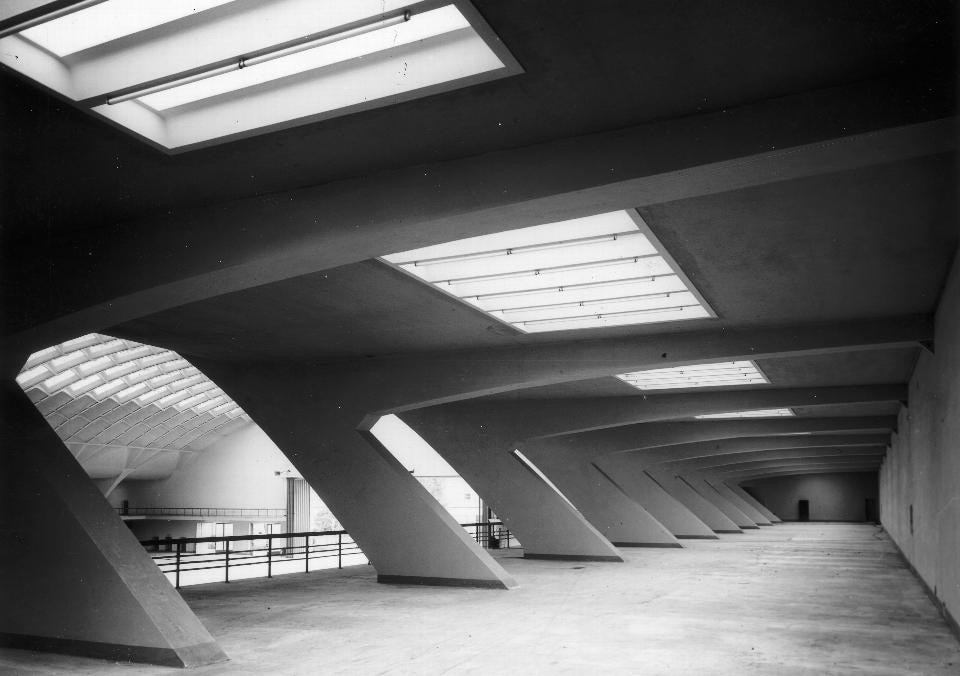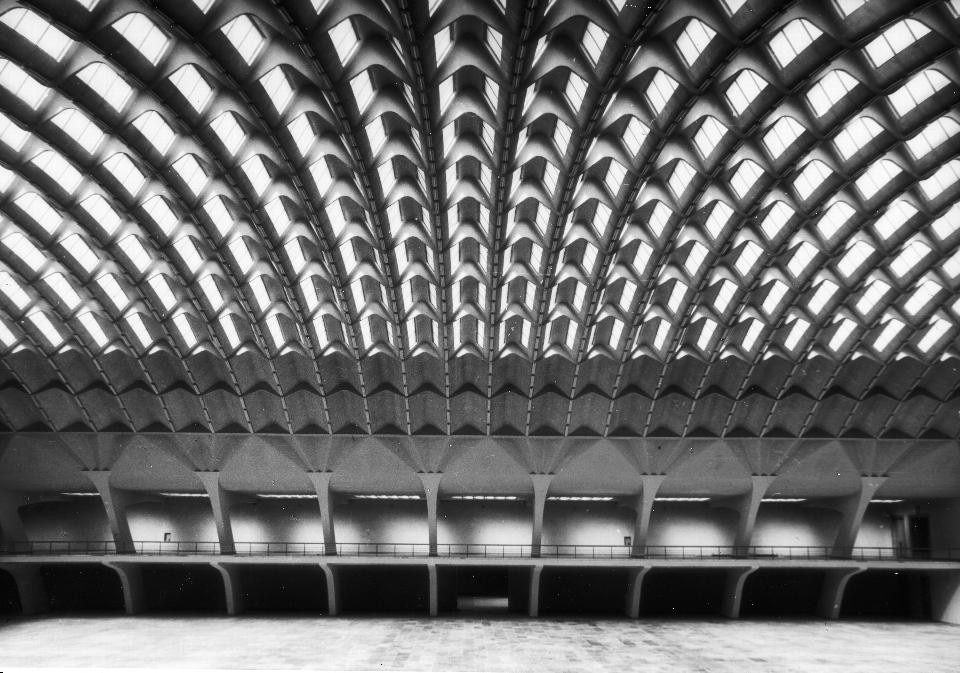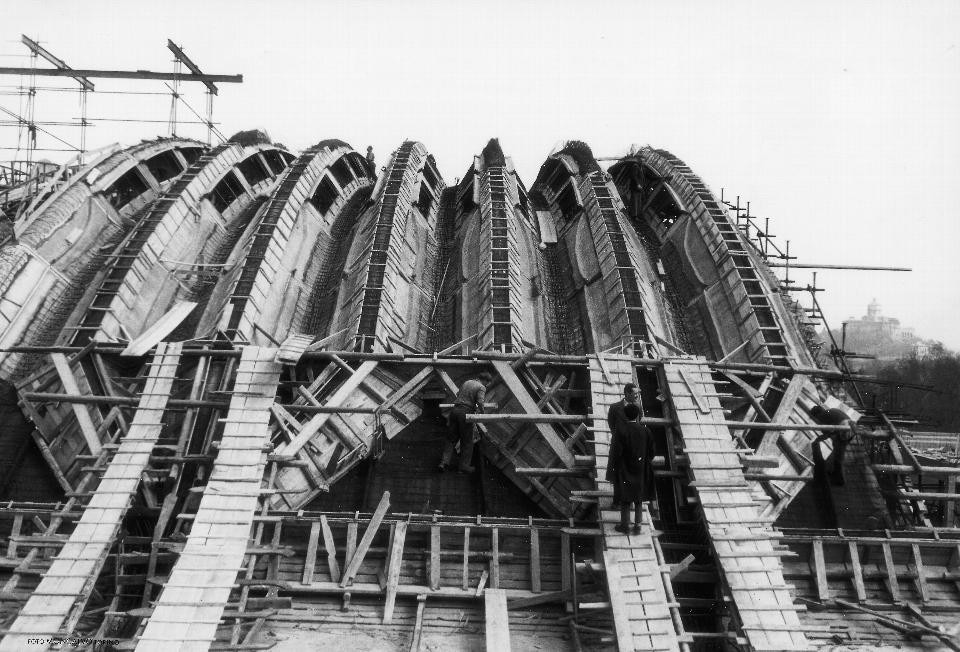Architect Biscaretti Ruffia added a complex of halls and rooms to the part of Turin's Palace of Fashion—designed by the architect Sottsass [ed note: Ettore Sottsass Sr., father of the Memphis designer]—that had been damaged in the war. The complex will house various exhibitions, the first of which will be the Motor Show. A precast structure designed by the engineer Pierluigi Nervi was utilized for the construction of the large central hall. With an almost square plan, two side galleries and a semicircular apse, the hall covers approximately 200 square meters. The heavier structures, which could not be placed in the upper zone, are located in another semi-circular hall below it. Nervi, designer of the precast concrete structure, pointed out how the limited amount of time allotted for construction and the unusual size of the building created a series of uncommon construction problems that are difficult to resolve through the use of traditional building systems. He employed new construction procedures that had already been successfully utilized by the engineering firm Nervi and Bartoli of Rome.
These systems are essentially based on prefabrication and the use of ferrocement. The large 96m X 75m hall has a thin, corrugated vaulted roof made of a series of ferrocement components structurally bound to each other. The installation took place by using a special scaffolding with reinforced concrete ribs along the ridges and valleys of the roof section. The elements, as wide as one of the "waves" and 4.40 meters in length, have a thickness of 4 centimeters.
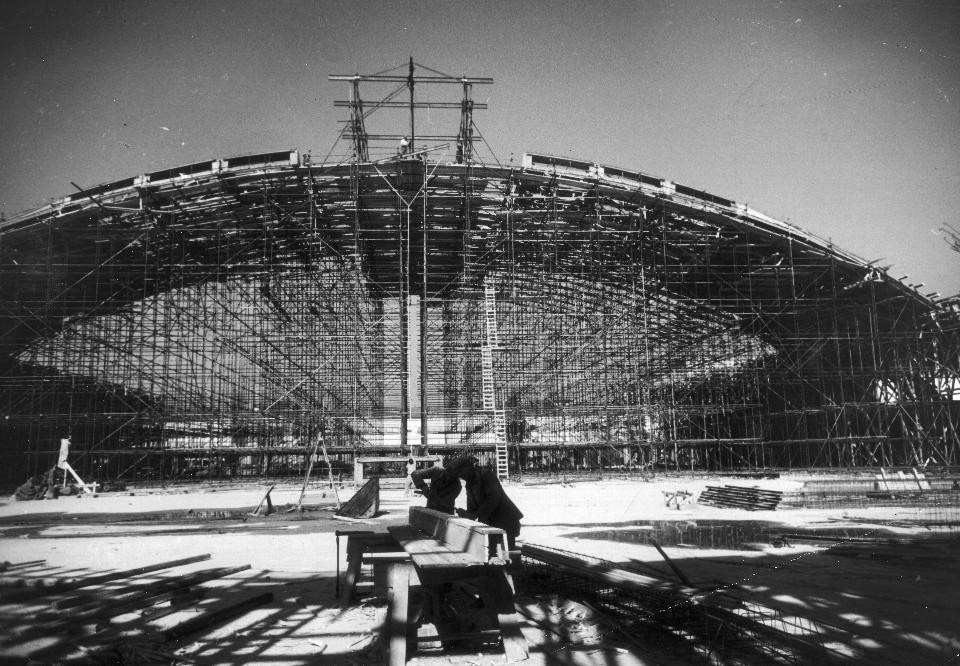
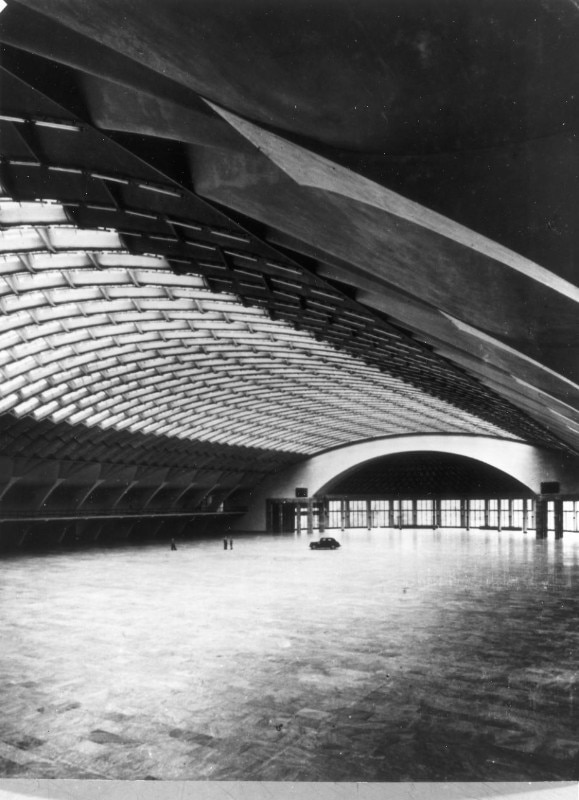
It can be noted that the spontaneous architectural expression, derived from the sincere exhibition of static and constructive forms, is the main feature of all the structural elements in the Turin Exhibition Hall.
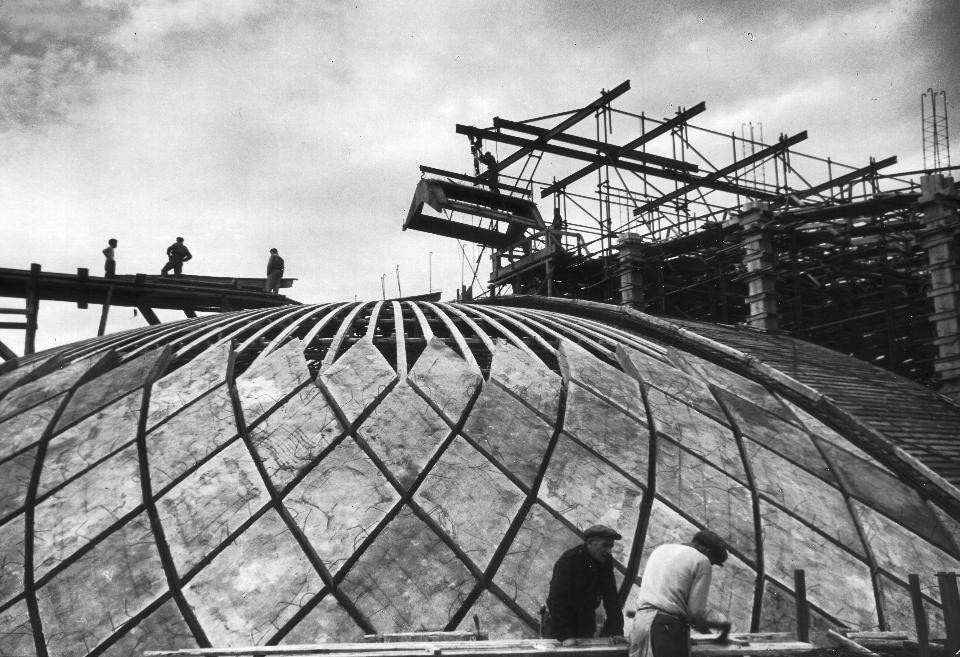
The prefabrication process made the shape of the beams possible, with their enlargement towards the structural piers responding integrally to the building's static requirements.
